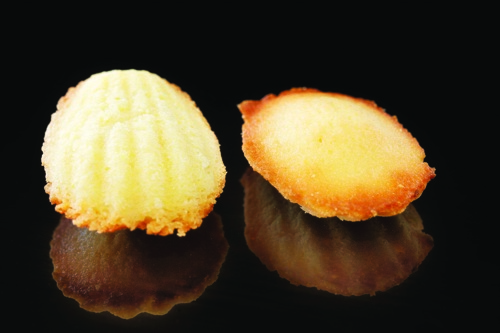We know that memories and food are closely interlinked. Perhaps more than anything else, food links us to the special people, places and events that collectively brought us to where we are and made us who we are.
It is no surprise then that so many of the world’s classic dishes were created in honour of special people or at least named after them.
These dishes outlived both their creators and inspirations and may have undergone many changes, but they still provide a most tangible link between our past and our now.
As such, they are a source of melancholy and happiness of the most honest and romantic kind.
Petite Madeleines is one such dish that takes me to a happy place.
In essence, Petite Madeleines are little sponge cakes made with flour, whole eggs, butter and sugar (also called a genoise batter) and baked in a special shell-shaped mould. Some versions of early recipes include ground almonds. Lemon zest and/or vanilla are common flavour additions.
My earliest reference to Petite Madeleines is as a young student reading Marcel Proust’s ‘In Search of Lost Time’ (also translated as ‘Remembrance of Things Past’).
As I recall, it was a typical wet and gloomy winter’s day in Stellenbosch, in a rented room that matched the greyness of the weather. It was also a Saturday without any prospects for fun.
Other than the bed, a small writing desk and a bookshelf constructed from used bricks and discarded scaffolding; it was only I in the room. But at least I had all seven volumes of Proust’s famous exploration of memory. These I bought for the princely sum of R10 from a charity shop just the week before.
If my memory serves me correctly, I never finished all seven volumes, and I might have given them to a friend when I cleared out that little grey room for the final time.
What I do remember clearly though is that his (now famous) recollection of Petite Madeleines inspired me to disregard the famously foul Cape winter weather to search for a cup of warm milk-tea and a few of these famous little cakes. I wanted some, even if just a little, of what Proust described:
“No sooner had the warm liquid mixed with the crumbs touched my palate than a shudder ran through me and I stopped, intent upon the extraordinary thing that was happening to me. An exquisite pleasure had invaded my senses, something isolated, detached, with no suggestion of its origin. And at once the vicissitudes of life had become indifferent to me, its disasters innocuous, its brevity illusory – this new sensation having had on me the effect which love has of filling me with a precious essence; or rather this essence was not in me, it was me. …Whence did it come? What did it mean? How could I seize and apprehend it? …And suddenly the memory revealed itself.
“The taste was that of the little piece of madeleine which on Sunday mornings at Combray (because on those mornings I did not go out before mass), when I went to say good morning to her in her bedroom, my aunt Léonie used to give me, dipping it first in her own cup of tea or tisane. The sight of the little madeleine had recalled nothing to my mind before I tasted it. And all from my cup of tea.”
Even though I could not find Madeleines on that fateful day, Proust’s reference to the powerful effects of involuntary memory remained with me ever since. It is a constant reminder of the powerful influence of food on our emotional wellbeing.
These days I bake my own Petite Madeleines whenever I need some cheering up. The most difficult aspect of making them, is finding the classic shell-shaped pan (in this town at least). If you are in luck, one of the local baking supply stores might have some in stock and you’ll be in business right away. If not, you might have to wait awhile longer.
Be it as it may, your life will be better with these sweet, buttery delights.
I promise.
Just ask the Pet Shop Boys; they should know:
“Over and over again
I keep tasting that sweet madeleine
looking back at my life now and then asking: if not later then when?”
As to the question of who Madeleine was, I’d like to believe it was Madeleine Paulmier, a 18th century cook for Stanislaw Leszczynski, who was the son-in-law of King Louis XV of France, but I cannot be sure. Others seem to remember differently.
• 125 grams of butter, melted, then cooled
• 2 large eggs
• 150 grams of caster sugar
• 1 teaspoon of vanilla extract
• A pinch of salt
• Extra flour, for dusting
Stay informed with The Namibian – your source for credible journalism. Get in-depth reporting and opinions for
only N$85 a month. Invest in journalism, invest in democracy –
Subscribe Now!










